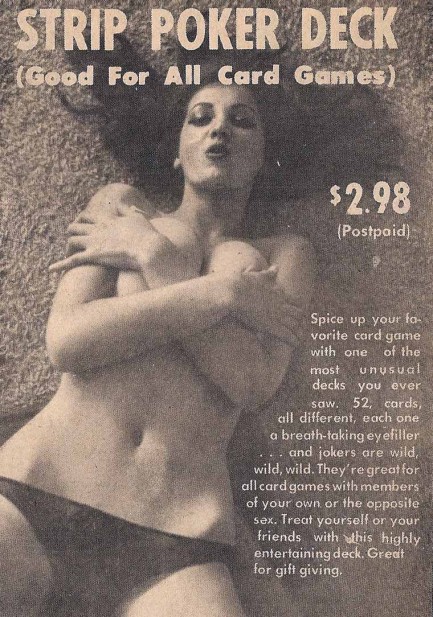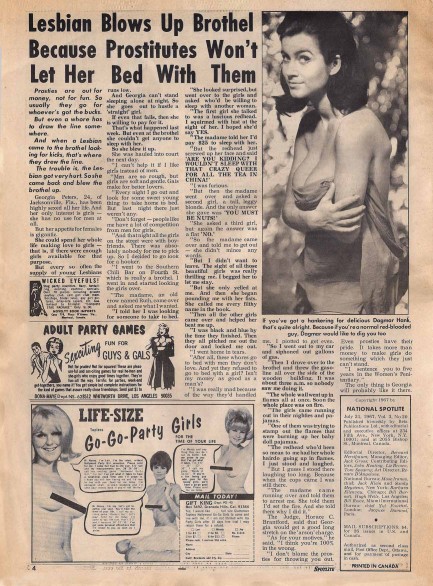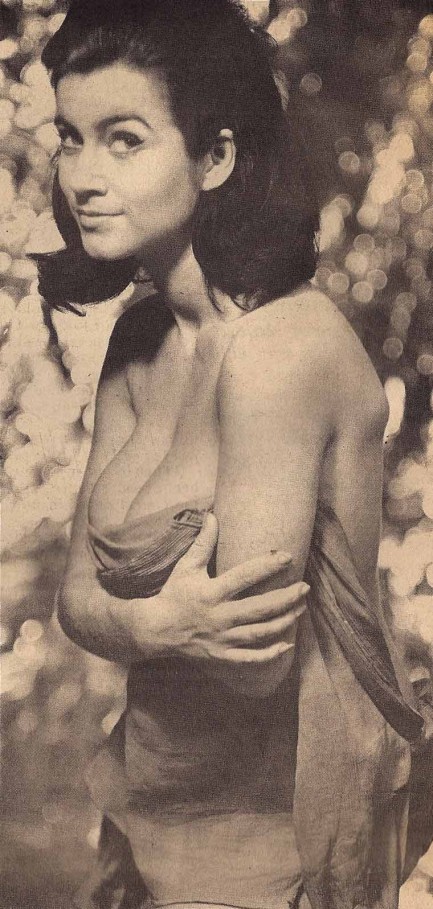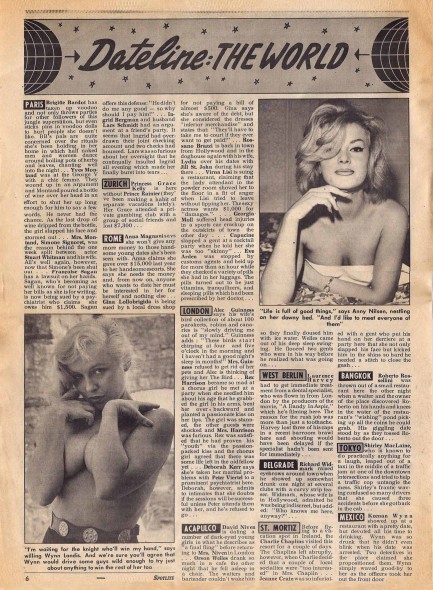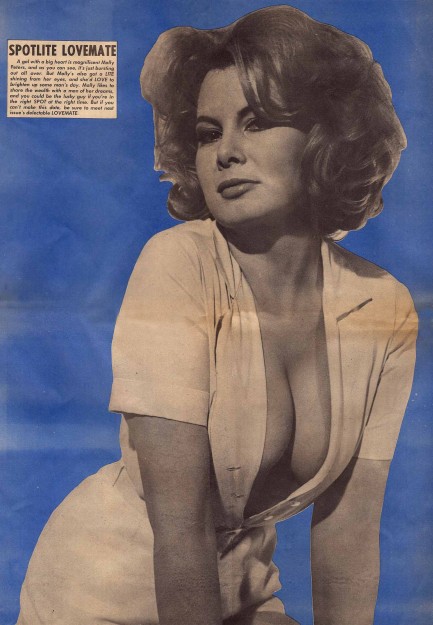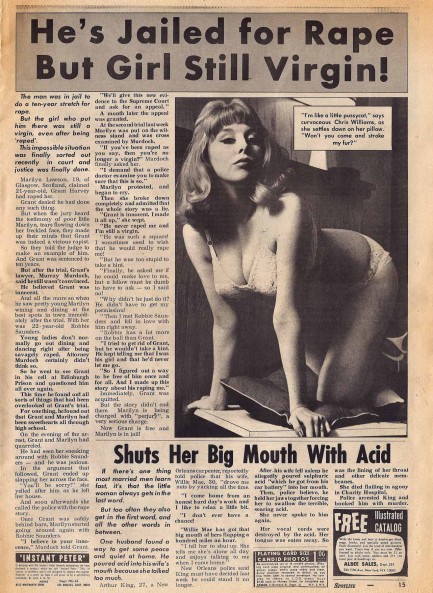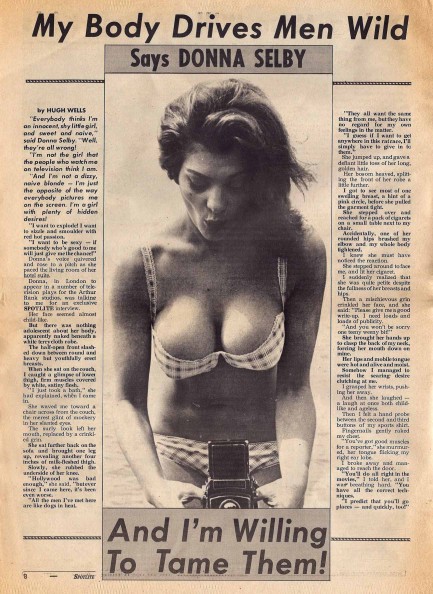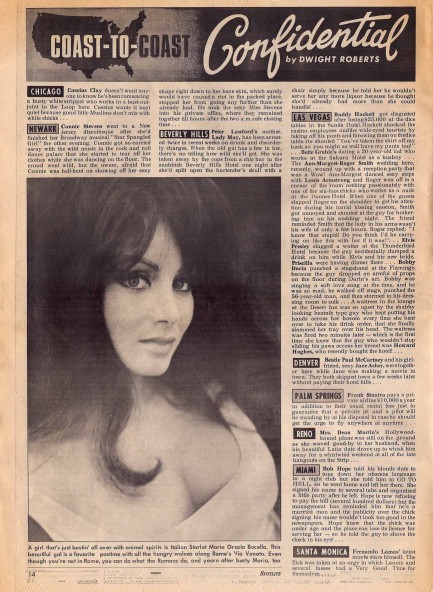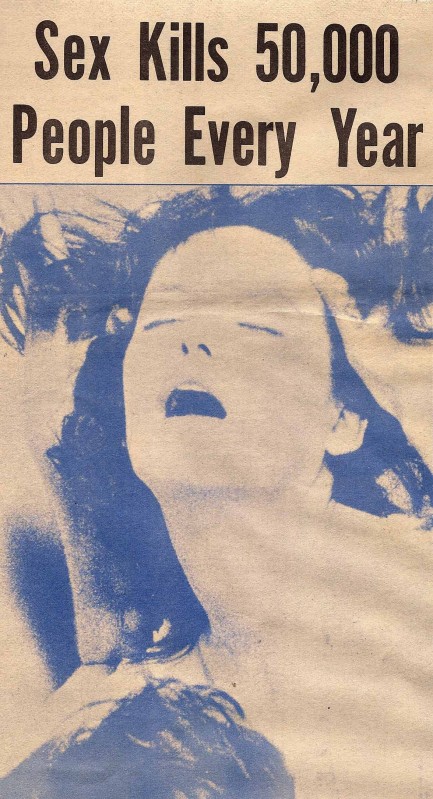| Intl. Notebook | Sep 2 2022 |

Minuit puts the country's hospitable reputation to the test.
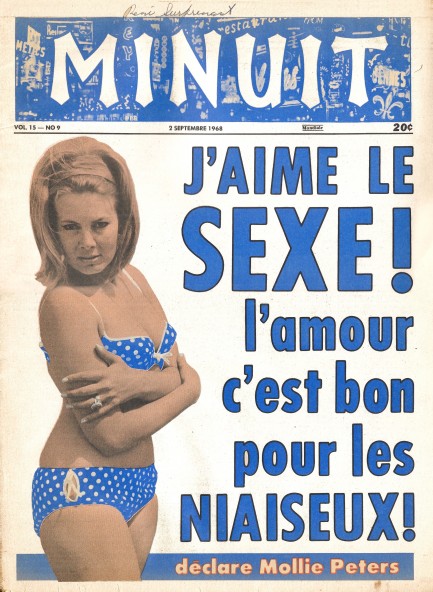
Ever since we discovered a while back that the U.S. tabloid Midnight was actually a spin-off of Montreal based Minuit we've been looking around for issues. We finally had some luck. This example hit Canadian newsstands today in 1968, and on the cover is British actress Mollie Peters, or Molly Peters. Inside, various Hollywood stars are spotlighted in unflattering ways. Edy Williams was allegedly attacked by a lesbian; Paul Newman resorted to transcendental meditation to cut down on his drinking; Jason Robards, Jr. broke everything Humphrey Bogart related in Lauren Bacall's house; Robert Vaughn paid off his extensive gambling debts and cancelled his credit cards; Janet Margolin allegedly ate a pound of ground beef every day for health reasons; and Ursula Andress attacked Anita Ekberg in a Paris restaurant for making eyes at Andress's boyfriend Jean-Paul Belmondo.
There's also a note on Babsi Zimmermann, who Minuit claims just refused a nude role in a French film. We noticed the blurb because of her name, which seems too good to be true, and familiar too. We looked her up and she did exist. It turns out she was better known as Barbara Zimmermann. She changed her stage name after the release of her first film, a counter-culture sexploitation romp called Heißer Sand auf Sylt, aka The New Life Style (Just to Be Love). Maybe she wanted a fresh start because the movie was such a stinker. We know it was bad because we wrote about it, which is why her name sounded familiar. She's naked as a donskoy cat in it, so Minuit's claim that she refused the French movie makes sense if she wanted to rebrand herself. The change still has people confused. Currently IMDB has separate entries for Babsi and Barbara.
Minuit reserves special attention for U.S. actor George Hamilton, who had been generally targeted by tabloids for avoiding military service in Vietnam. Why him? We wrote about the reason a long while back, and if you're curious you can check. Minuit wryly informs readers that, “George Hamilton somehow managed to break his toe the day after he received a notice to report to the U.S. Army recruiting center. This gives him an interesting three-month [deferral]. It's clever, isn't it?” Obviously, toes heal. Hamilton eventually received a full deferral for other reasons.
Also in this issue, Minuit editors treat readers to a story about a man cut in half by a train. We feel like it's urban folklore, but there are photos—for any who might be convinced by those—and a long story explaining how a man named Regerio Estrada caught his wife Lucia in bed with another man, beat him unconscious, and tied him to a train track to await the next express. Do we buy it? Not really. The internet contains only a fraction of all knowledge and history, but we think this tawdry tale is so bizarre that it would have found its way online. There's nothing. Or maybe we're just the first to upload it. Anything is possible. We have additional colorful Canadian tabloids we'll be sharing in the months ahead. You'll find eighteen scans below.
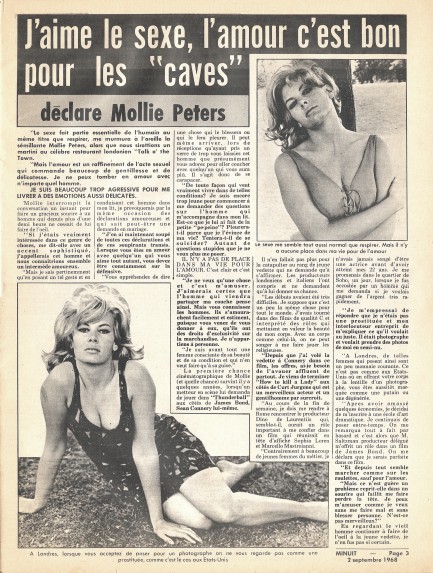
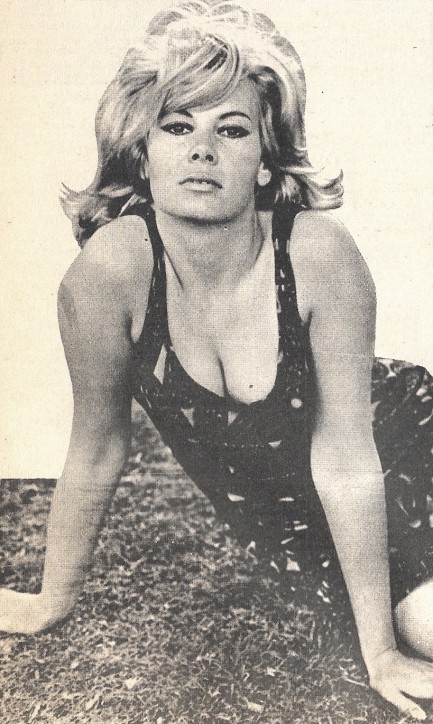
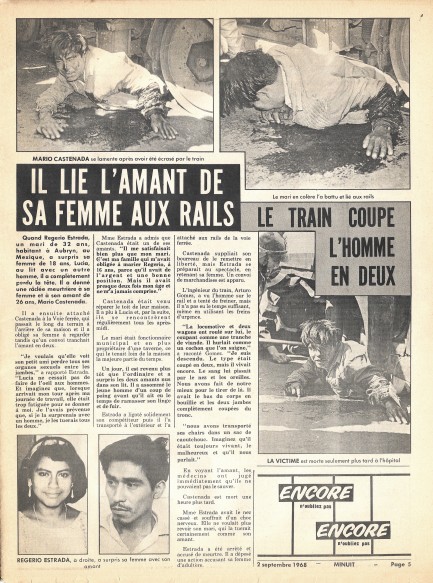
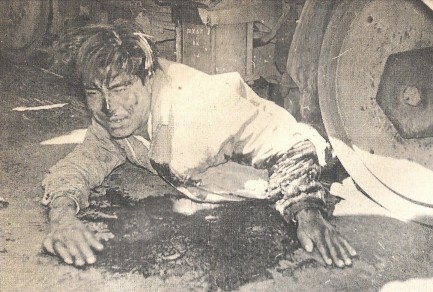
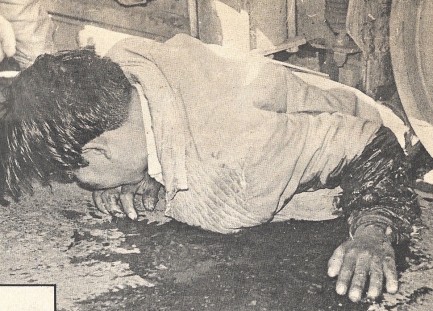
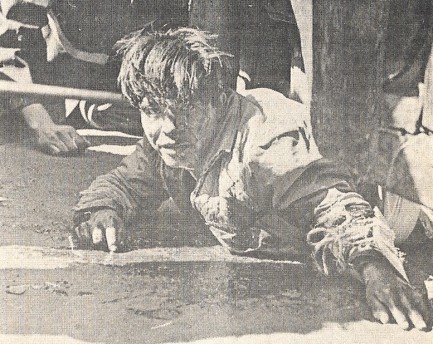
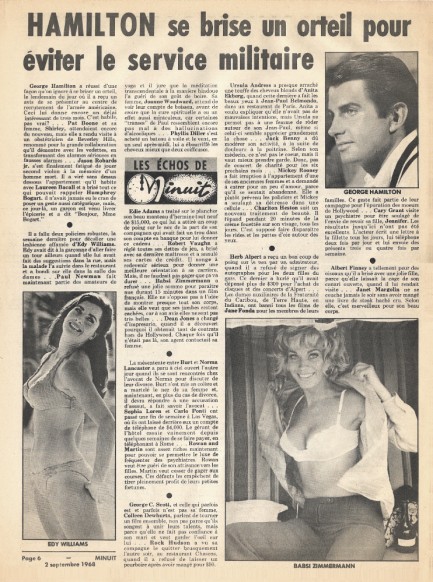
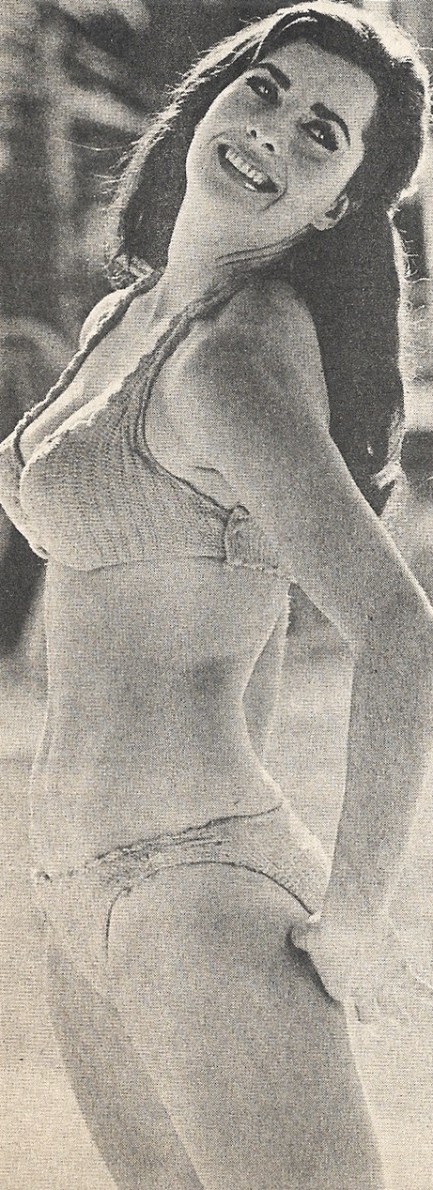
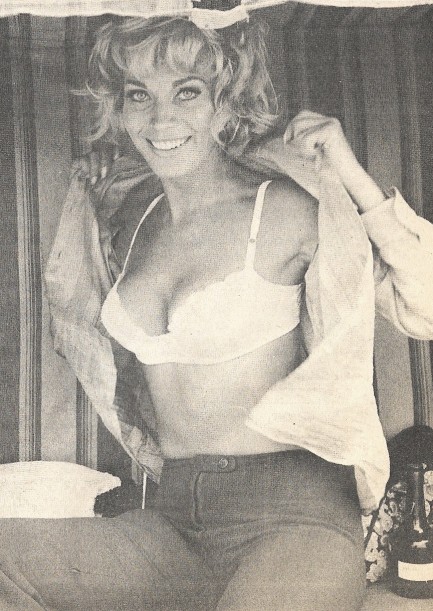
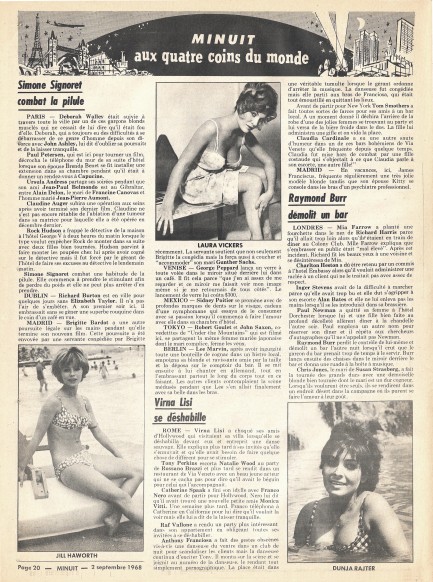
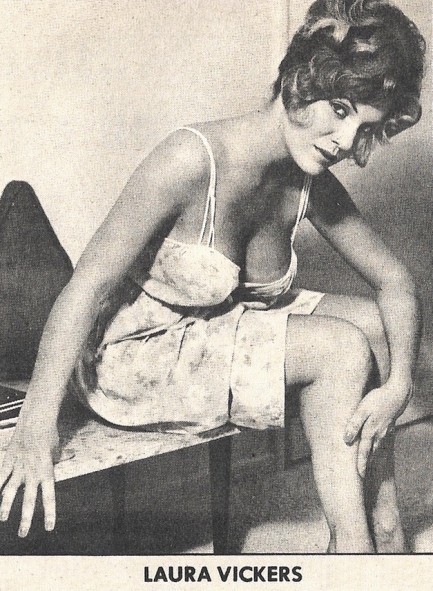
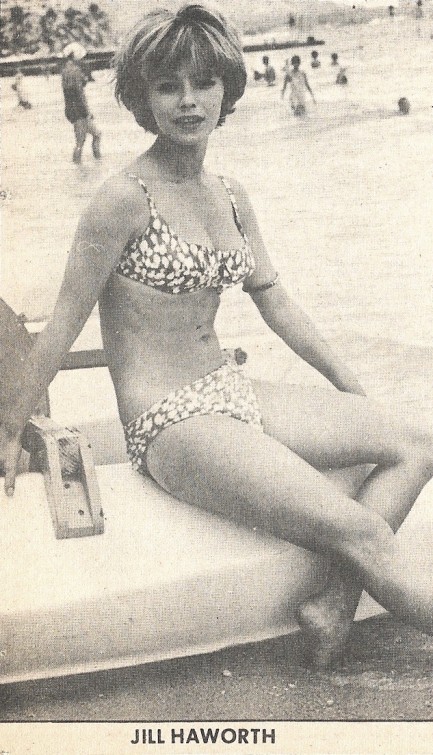
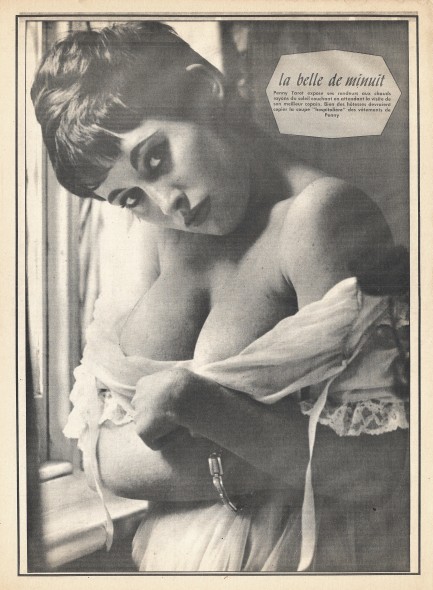
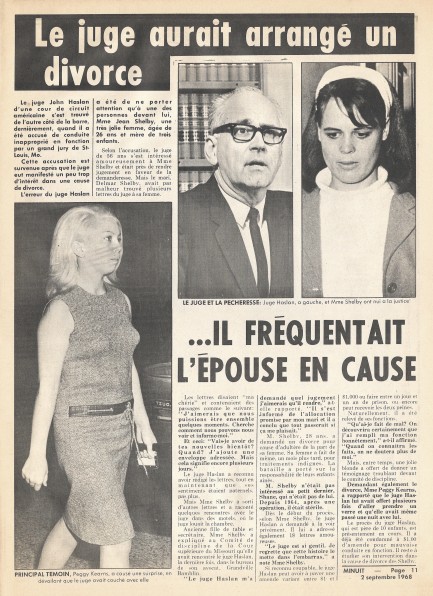
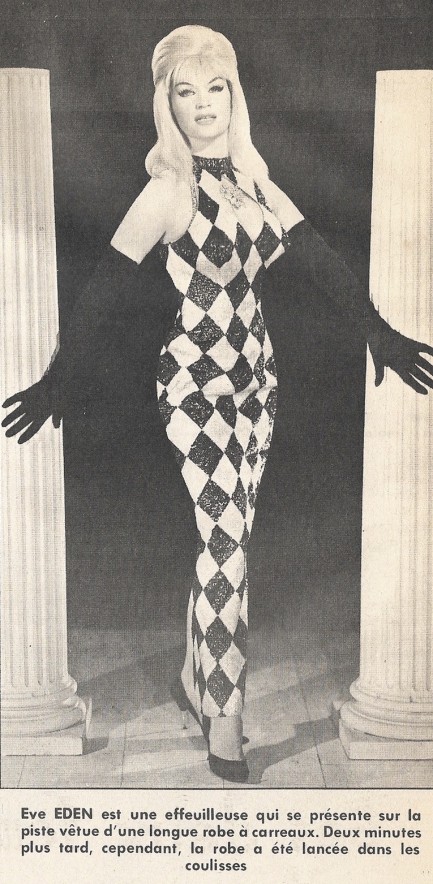
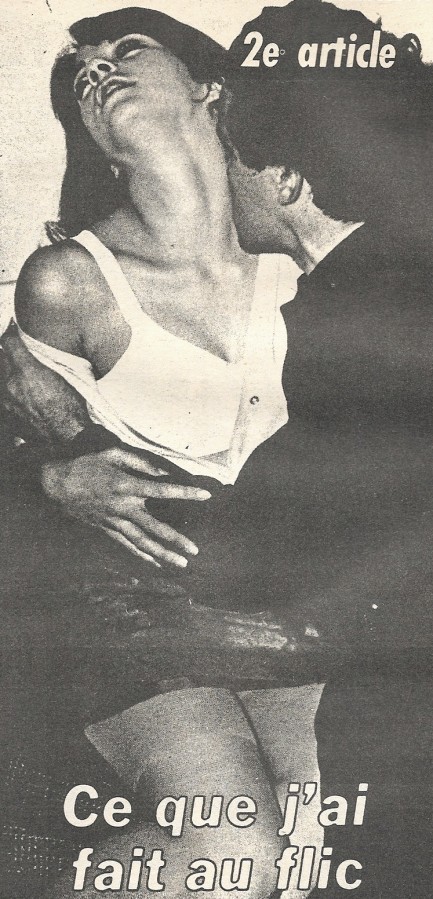
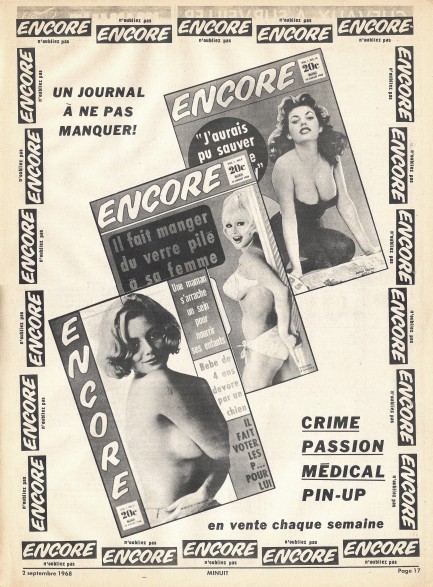
CanadaWest GermanyVietnamMontrealMinuitMidnightHeißer Sand auf SyltThe New Life Style (Just to Be Love)Mollie PetersMolly PetersEdy WilliamsGeorge HamiltonBabsi ZimmermannBarbara ZimmermannLaura VickersJill HaworthDunja RajterPenny TarotEve EdenJean-Pierre CoallierRobert VaughanJason Robards Jr.Lauren BacallHumphrey BogartPaul NewmanAnita EkbergUrsula AndressJean-Paul BelmondoJanet MargolinJanet DaneYvonne d'AngersMarlene Schroedertabloid
| Hollywoodland | Jul 31 2013 |

Raquel Welch represents a high water mark for the low rent National Spotlite.
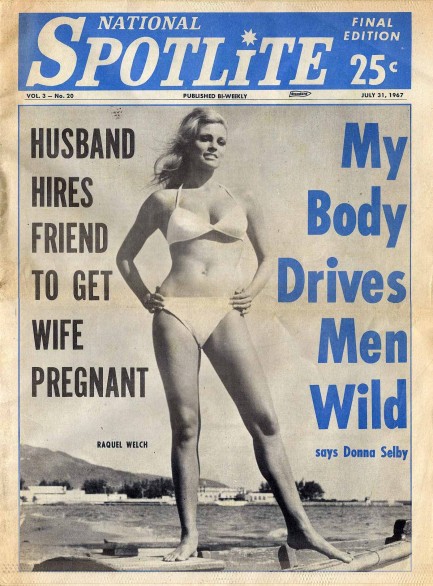
Her body drives men wild. But it isn’t Raquel Welch being quoted on the cover of this National Spotlite published today in 1967, though the juxtaposition of text makes it seem so. No, the line came from a little known actress named Donna Selby, who National Spotlite scribe Hugh Wells interviewed in London. The story is rather amusing, as Wells tells readers how Selby appeared in only a bathrobe, made a pass at him, gave him an unwanted kiss and even licked his ear. He claims to have fled the room, saying to the actress, “I predict that you’ll go places—and quickly too!” But he was wrong about that—try as we might, we can’t find mention of an actress named Donna Selby anywhere.
But getting back to Raquel Welch, the cover shot comes from one of her most famous photo sessions, the same one that produced this excellent image and many others. Welch had gone briefly blonde, and the resultant photos are the only ones we’ve seen of her with golden hair. You know what would make her presence here even better? An interview. But no such luck. National Spotlite is simply making good use of a handout photo. Moving on, readers are treated to a nice shot of Patsy Ann Noble, aka Trisha Noble, just below, who we discussed back in 2009, and also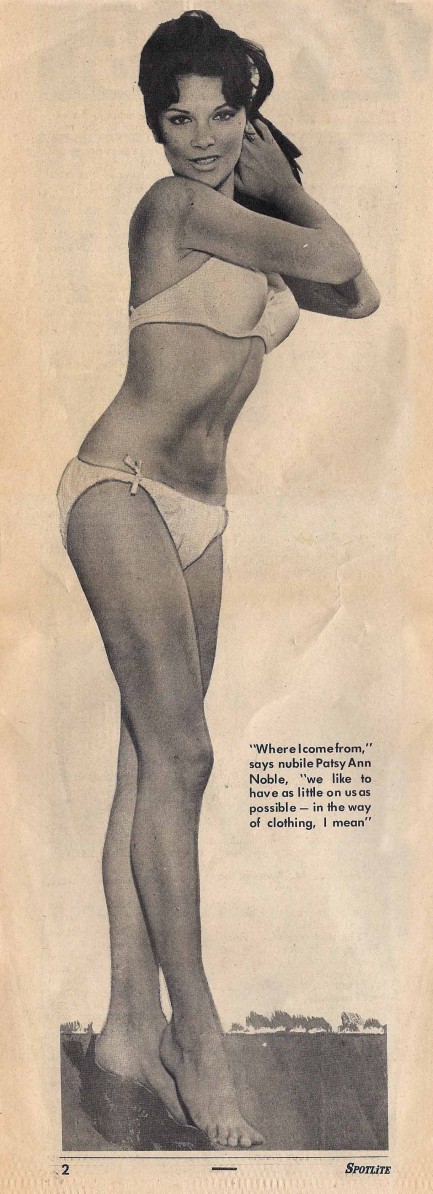 appearing in the issue is German actress Dagmar Hank, who acted in several movies between 1958 and 1965. Lastly, in the centerfold you get Molly Peters, who was a Harrison Marks model and whose most notable cinematic output was a bit part in Thunderball.
appearing in the issue is German actress Dagmar Hank, who acted in several movies between 1958 and 1965. Lastly, in the centerfold you get Molly Peters, who was a Harrison Marks model and whose most notable cinematic output was a bit part in Thunderball.
You have to give National Spotlite credit—unlike many middle tier tabloids of the period this one managed to actually feature relevant and semi-relevant personalities. That comes as a surprise, since it was owned by the infamous Beta Publications of Spotlite Extra and Close-Up Extra fame. But as the flagship paper, National Spotlite doubtless had a higher budget. The masthead tells us it even had offices in New York City and Montreal, which is kind of impressive. Within a few more years, though, the paper regressed to the same form as Beta’s cheaper imprints and was reduced to putting out issues like this one. Like Marlon Brando in On the Waterfront, for a while National Spotlite coulda been a contenduh. It just never quite made it.
 appearing in the issue is German actress Dagmar Hank, who acted in several movies between 1958 and 1965. Lastly, in the centerfold you get Molly Peters, who was a Harrison Marks model and whose most notable cinematic output was a bit part in Thunderball.
appearing in the issue is German actress Dagmar Hank, who acted in several movies between 1958 and 1965. Lastly, in the centerfold you get Molly Peters, who was a Harrison Marks model and whose most notable cinematic output was a bit part in Thunderball.You have to give National Spotlite credit—unlike many middle tier tabloids of the period this one managed to actually feature relevant and semi-relevant personalities. That comes as a surprise, since it was owned by the infamous Beta Publications of Spotlite Extra and Close-Up Extra fame. But as the flagship paper, National Spotlite doubtless had a higher budget. The masthead tells us it even had offices in New York City and Montreal, which is kind of impressive. Within a few more years, though, the paper regressed to the same form as Beta’s cheaper imprints and was reduced to putting out issues like this one. Like Marlon Brando in On the Waterfront, for a while National Spotlite coulda been a contenduh. It just never quite made it.
